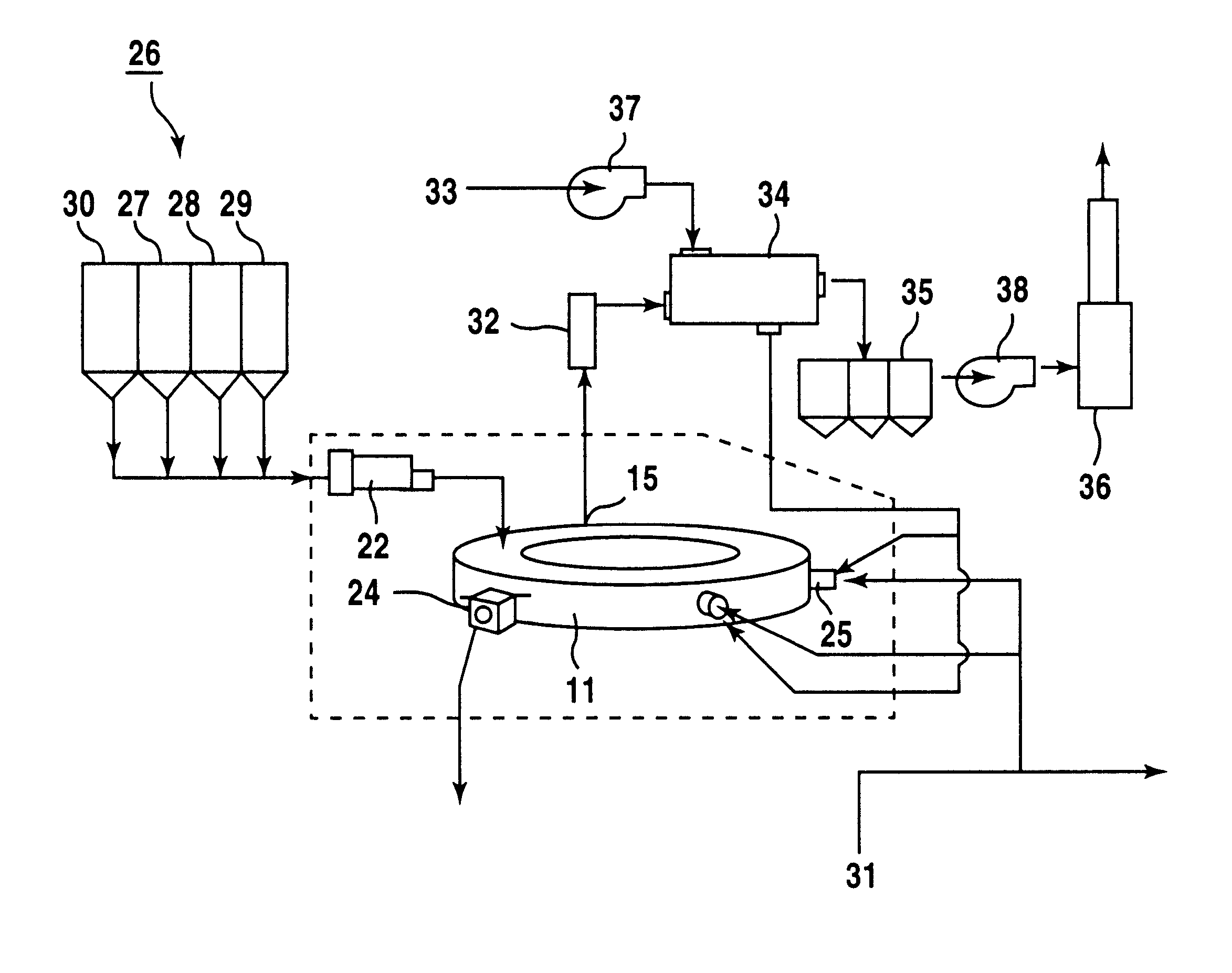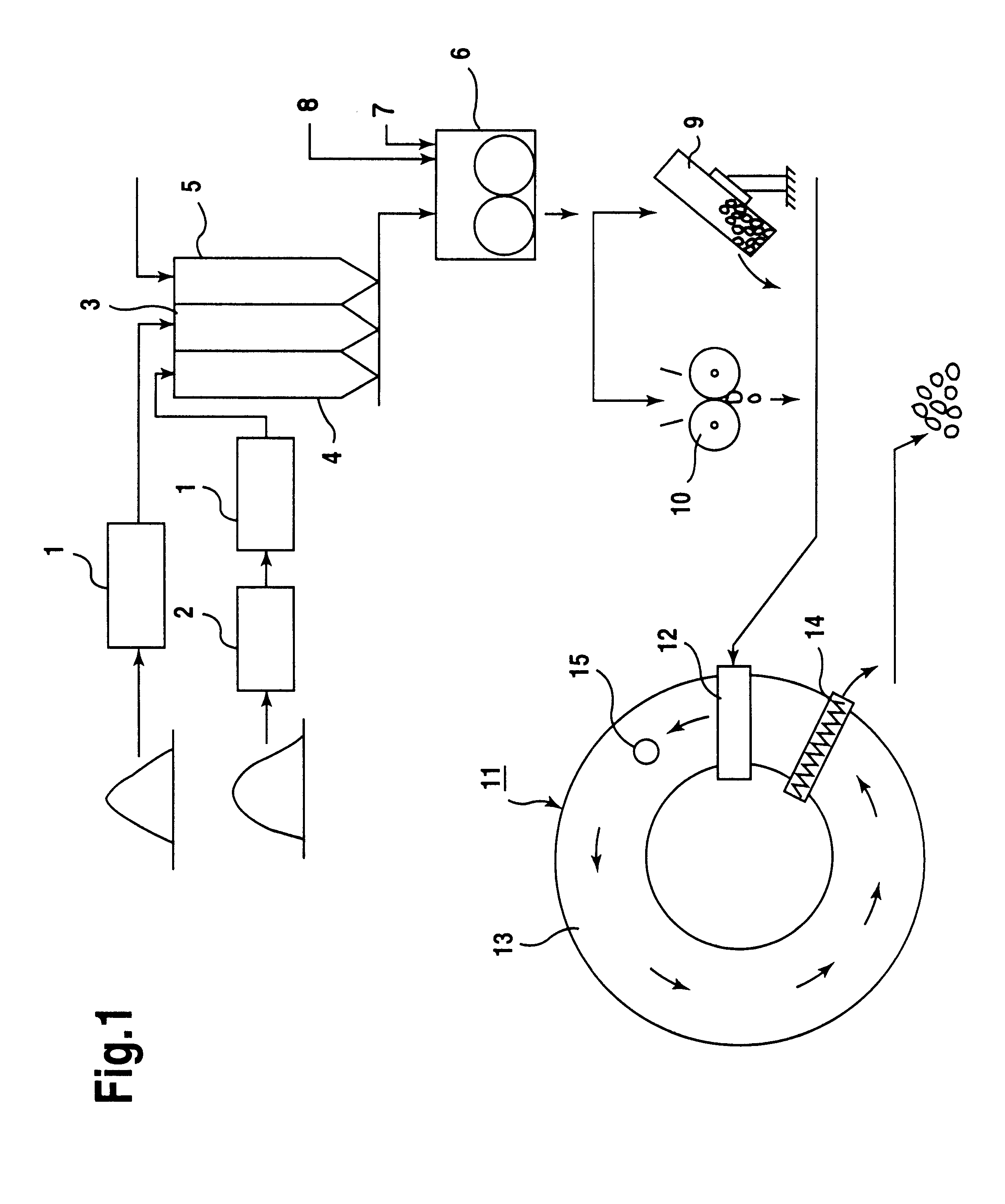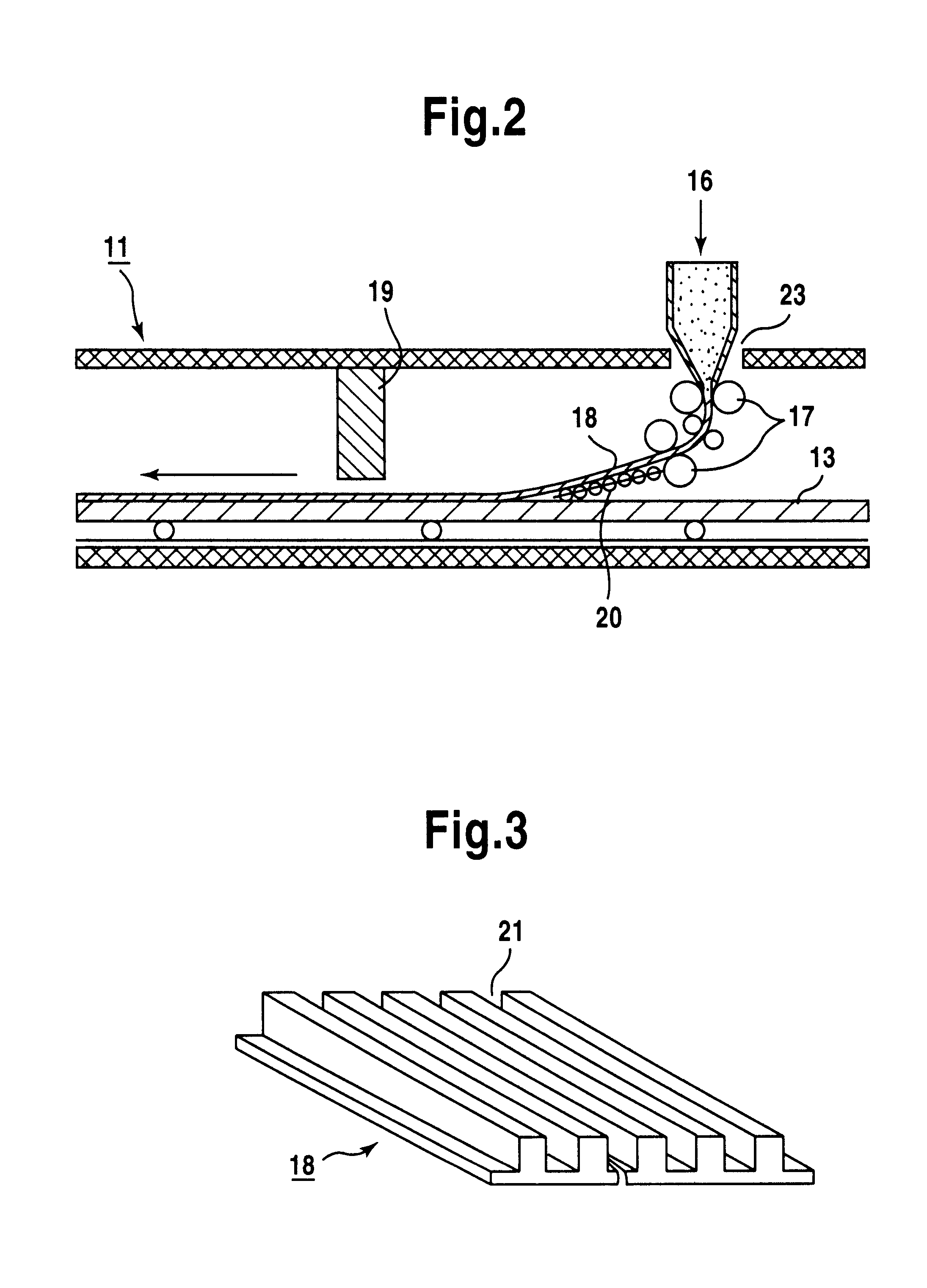Method and facility for producing reduced iron
- Summary
- Abstract
- Description
- Claims
- Application Information
AI Technical Summary
Problems solved by technology
Method used
Image
Examples
example 1
Powder ferrous raw material, coal (fine powder coal) as powder solid reductant and bentonite (binder) each of a composition shown in Table 1-Table 3 were prepared. Table 4 shows the grain size constitution of the powder ferrous raw material and the coal.
TABLE 1
TABLE 1
TABLE 4
After mixing them in blending ratios shown in Table 5, the mixed raw materials were formed into sheet-like compacts each of 15 mm thickness and 500 mm width and into sheet-like compacts having the same width but having uneven shape on the surface as shown in FIG. 3 by a shaping and charging device shown in FIG. 2.
Further, for the comparison, a portion of the mixed raw materials was pelletized into green pellets of 18 mm diameter by a pan type pelletizer, and then heated to 115.degree. C., into dry pellets with 90% or more of water content being removed.
The compacts and pellets were put to reducing test under the conditions shown in Table 6 by using a small-sized high temperature heating-reduction test furnace sho...
case 7
is an example of using ferrous raw material comprising ore A blended with igron work dust. Case 8 is an example of using ferrous raw material comprising dust and mill scale blended therewith. The reduction time in each of the cases was about 12 min and 11 min, which was substantially identical with the case 4 of using iron ore.
Further, dezinc ratio in case 7 using Zn-containing dust was about 92% and the dezinc effect according to the method of the present invention could be confirmed.
It is considered that although the mixed raw material S was somewhat coarser, the reduction time was not changed so much in case 8, because iron oxide in the mixed raw material S was FeO and the reduction ratio was about 30% on the basis of Fe.sub.2 O.sub.3, so that the reduction amount down to the metallic iron may be smaller as well as that the amount of endothermic reduction per iron atom from FeO into metallic iron is decreased by about 20590 kcal / kmol compared with the case of Fe.sub.2 O.sub.3 and...
example 2
Powder iron ore and coal (fine powder coal) as the powder solid reductant having the composition and the grain size constitution as shown in Table 7-Table 9 blended in a blending ratio shown in Table 10 was prepared.
TABLE 7
TABLE 9
TABLE 9
As the test facility, a small-sized molten iron manufacturing test facilities described above shown in FIG. 17 was used. That is the facility comprises a rotary hearth furnace 11 as a preliminary reduction furnace, a shaft furnace 85 as a smelting furnace and a raw material receiving hopper 26, a mixer 22 and a waste heat recovery heat exchanger 34 and the like.
Powder ore 27, reductant 28 (fine powder coal) and a binder 29 received in a raw material receiving hopper 26 were taken out each by a predetermined amount from respective hoppers and charged in the mixer 22, sufficiently mixed with addition of a small amount of water and then the mixture was charged into the rotary hearth furnace.
The mixture was charged into the hearth by compacting them into...
PUM
| Property | Measurement | Unit |
|---|---|---|
| temperature | aaaaa | aaaaa |
| diameter | aaaaa | aaaaa |
| diameter | aaaaa | aaaaa |
Abstract
Description
Claims
Application Information
 Login to View More
Login to View More - Generate Ideas
- Intellectual Property
- Life Sciences
- Materials
- Tech Scout
- Unparalleled Data Quality
- Higher Quality Content
- 60% Fewer Hallucinations
Browse by: Latest US Patents, China's latest patents, Technical Efficacy Thesaurus, Application Domain, Technology Topic, Popular Technical Reports.
© 2025 PatSnap. All rights reserved.Legal|Privacy policy|Modern Slavery Act Transparency Statement|Sitemap|About US| Contact US: help@patsnap.com



